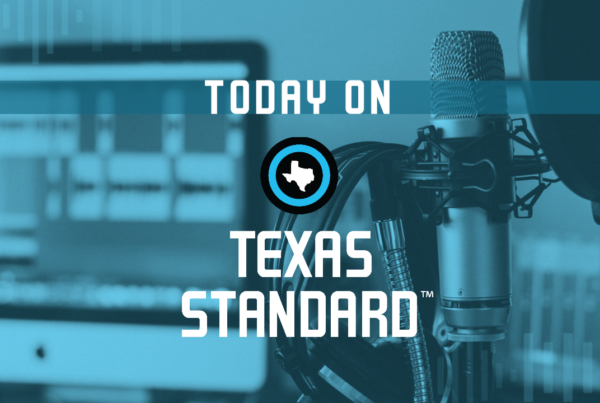From Houston Public Media:
CenterPoint Energy defended its accounting practices last Thursday, in the latest hearing before the state agency that regulates Texas utilities. Jason Ryan, CenterPoint’s executive vice president for regulatory services and government affairs, told the Public Utility Commission (PUC) how the company was running internal and externally managed audits of the expenses filed by the mutual assistance crews it had brought in after Hurricane Beryl.
“Ultimately, it’s not our judgment, though, on what’s reasonable. Even though we’re going to have internal audit, external audit, we will then have a process here at the Commission for intervening parties and the staff to look over that and get their opinion on what’s reasonable,” Ryan said.
The PUC, which is investigating CenterPoint’s handling of Beryl under orders from Governor Greg Abbott, was clear about the company’s responsibility to its customers.
“When we want mutual assistance folks, gosh, we need them now,” said Commissioner Jimmy Glotfelty, “but the ratepayers deserve every audited, every component, every nickel scrutinized, so that we can ensure that they’re getting the best service.”
Glotfelty’s underlying message was that whatever costs the PUC ultimately approves will be passed along to the ratepayers.
Asked about the total costs CenterPoint was racking up for repairs relating to Beryl, and the May derecho that preceded it, Ryan hedged. He said the total costs for the derecho likely won’t be available until the fourth quarter of this year. “It will take us a while longer to get the invoices and go through the audit process, both internal and external, for Hurricane Beryl,” Ryan said. “So, I wouldn’t expect that to be until well into next year.”
CenterPoint responded to a similar request from Houston Public Media for comment on the cost with the statement, “We are currently focused on the work we are completing and do not have a final cost at this time.”
Estimated costs for Beryl and how CenterPoint intends to pay
CenterPoint’s latest quarterly report to the U.S. Securities and Exchange Commission, however, suggests the company does have some idea of the ultimate costs.
“(CenterPoint subsidiary) Houston Electric currently estimates that total costs to restore the electric delivery facilities damaged as a result of the May 2024 Storm Events and Hurricane Beryl will be in the range of $425 million to $475 million and $1.2 billion to $1.3 billion, respectively, based on currently available information,” the filing said. “These preliminary estimates are subject to revision as certain restoration costs may continue through the end of 2024.”
The filing also indicated how CenterPoint intends to pay for those costs: “The ultimate recovery of costs relating to the May 2024 Storm Events and Hurricane Beryl is expected to be sought through the issuance and sale of non-recourse securitization bonds for distribution-related costs and the…capital mechanism for transmission-related costs, as applicable… with the debt service and other financing costs of the securitization bonds being paid over the term of the securitization bonds through a storm restoration charge imposed on Houston Electric’s customers.”
So, why does CenterPoint, which failed to keep power flowing to millions of customers after Hurricane Beryl, get to pass the buck to the public?
“In my almost 35 years of experience in this utility business, the customers end up paying. They always end up paying,” said energy consultant Karl Rábago, who served on the PUC under Governors Ann Richards and George W. Bush. “That’s because electricity is essential for modern life, and you can’t just go around bankrupting or allowing utilities to go bankrupt by forcing shareholders to bear what some people might say is the fair consequences of mismanagement.”
That’s not unique to Texas. Paul Arbaje is an energy analyst with the Union of Concerned Scientists.
“There’s a general fear by regulators that they don’t want to open the Pandora’s box of making shareholders pay for these disaster costs, at least thus far, because they’re worried that investors will take their money elsewhere,” Arbaje said.
Unlike shareholders, ratepayers are a captive audience. They need the electricity that the utility, a local monopoly, supplies through its power lines.
“Shareholders don’t even live in the communities that these utilities serve oftentimes,” Arbaje said. “An investor in CenterPoint stock might live in New York or California or something. So, I think it’s just a problem with the way we finance utilities in this country. There’s sort of a disconnect there, and there’s a difference in leverage and the options that ratepayers have versus what shareholders have.”
CenterPoint’s profit structure
The reason CenterPoint can pass on all those costs from the recent storms to customers stems from the Texas Utilities Code. CenterPoint gets to earn about five cents for every kilowatt-hour that flows through its lines to your home or business. But it also makes a profit based on certain kinds of expenditures.
“Every dollar they spend in capital infrastructure, they make 9.4% (return on equity). So, when they build a transmission line, a substation, they deploy a transformer — that’s capital infrastructure — they spend $1 million, they make $94,000 in profit on that,” said Doug Lewin, author of the Texas Energy and Power Newsletter.














